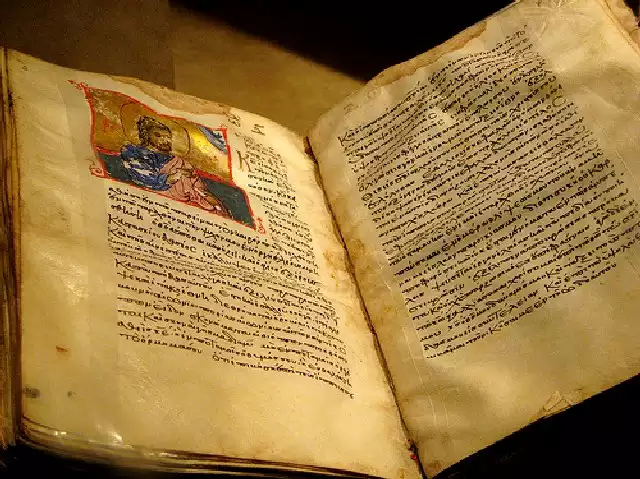
The Bible stands as a cornerstone of religious and cultural history, encompassing a collection of texts revered in Christianity and Judaism. Etymologically, the term ‘Bible’ originates from the Greek ‘ta biblia’, meaning ‘the books’, signifying its nature as a compilation of various writings. Historically, the Bible’s formation spans centuries, with its earliest portions dating back to around 1200 B.C., evolving through oral traditions and later written accounts.
This sacred anthology is broadly categorized into the Old Testament, central to Jewish faith, and the New Testament, fundamental to Christianity. The Old Testament encompasses historical narratives, poetry, prophecies, and laws, offering insight into ancient Israelite culture and beliefs. The New Testament, written primarily in Koine Greek, comprises the life and teachings of Jesus Christ and the early Christian church. These texts collectively have exerted profound influence on Western thought, art, and morality.
The Bible’s compilation involved a complex process of canonization, where religious authorities discerned authoritative texts from numerous early writings. This process varied between Jewish and Christian traditions, leading to differences in the canonical books recognized by different sects.
Genesis and Exodus – A Synthesis of Beginnings and Liberation
The first book of the Bible, Genesis, presents the creation narrative, the fall of man, and the foundations of the Abrahamic lineage. It narrates the creation of the world, the first humans, Adam and Eve, and the inception of original sin, pivotal in Christian theology. Genesis also details the stories of Noah’s Ark, the Tower of Babel, and the patriarchs Abraham, Isaac, Jacob, and Joseph, establishing the roots of Israelite identity.
Exodus, the second book, chronicles the liberation of the Israelites from Egyptian bondage under Moses’ leadership. This narrative includes the iconic Ten Plagues, the crossing of the Red Sea, and the revelation of the Ten Commandments on Mount Sinai. Exodus not only serves as a liberation story but also sets the foundation for Jewish law and covenantal theology.
Both Genesis and Exodus are fundamental in understanding the Bible’s overarching themes of creation, fall, and redemption. They introduce key concepts and narratives that resonate throughout the subsequent books, shaping the theological and moral framework of both Judaism and Christianity.
Note: This article is part of a series exploring various aspects of the Bible. Future chapters will delve deeper into its thematic and historical significance.
The Prophetic Books and the Gospels – Voices of Guidance and Salvation
The prophetic books of the Old Testament, including Isaiah, Jeremiah, and Ezekiel, offer a blend of historical narrative, moral exhortation, and divine prophecy. These texts not only convey the prophets’ messages to Israel during times of turmoil and disobedience but also foreshadow the coming of the Messiah, a central figure in Christian belief. Their themes of justice, repentance, and divine intervention are pivotal in understanding the biblical concept of a covenantal relationship with God.
Transitioning to the New Testament, the Gospels of Matthew, Mark, Luke, and John present the life, teachings, death, and resurrection of Jesus Christ. Each Gospel, while distinct in style and perspective, collectively provides a comprehensive picture of Jesus’ role as the Messiah and Savior in Christian theology. They introduce fundamental Christian doctrines such as the Incarnation, Atonement, and Resurrection, profoundly influencing Christian worship, ethics, and eschatology.
The Gospels also underscore the themes of love, forgiveness, and redemption, resonating with believers and non-believers alike. Their narratives provide insights into the socio-political context of the Roman Empire and the religious landscape of first-century Judea.
In summary, the Bible, through its diverse books, offers a rich tapestry of historical, spiritual, and moral teachings. From the creation narratives in Genesis to the apocalyptic visions in Revelation, it presents a comprehensive view of human existence, divine interaction, and the hope for redemption. The Bible’s influence extends beyond religious boundaries, impacting literature, art, law, and ethics, making it a fundamental component of human heritage.
References
- Alter, Robert. The Hebrew Bible: A Translation with Commentary. W. W. Norton & Company, 2019.
- Coogan, Michael D. The New Oxford Annotated Bible with the Apocrypha. Oxford University Press, 2018.
- Ehrman, Bart D. The New Testament: A Historical Introduction to the Early Christian Writings. Oxford University Press, 2016.
- Metzger, Bruce M., and Bart D. Ehrman. The Text of the New Testament: Its Transmission, Corruption, and Restoration. Oxford University Press, 2005.
- Pelikan, Jaroslav. Whose Bible Is It? A History of the Scriptures Through the Ages. Penguin Books, 2006.
- Sanders, E. P. The Historical Figure of Jesus. Penguin Books, 1996.
- Wright, N. T. The New Testament and the People of God. Fortress Press, 1992.
